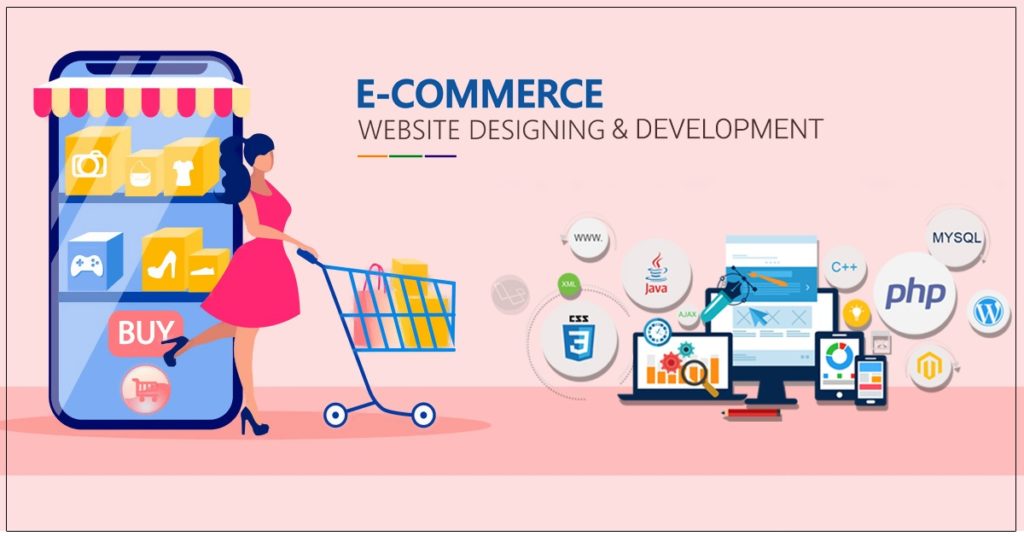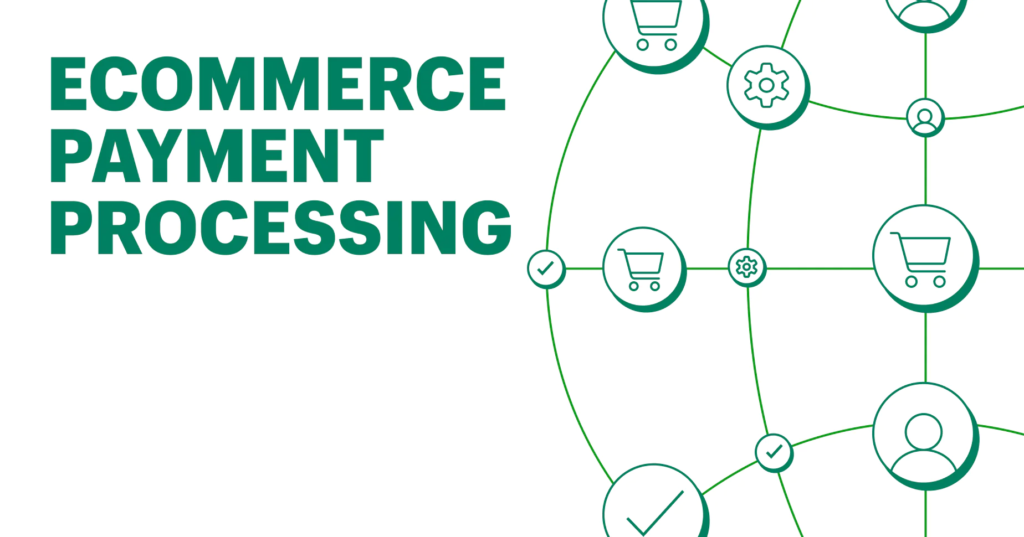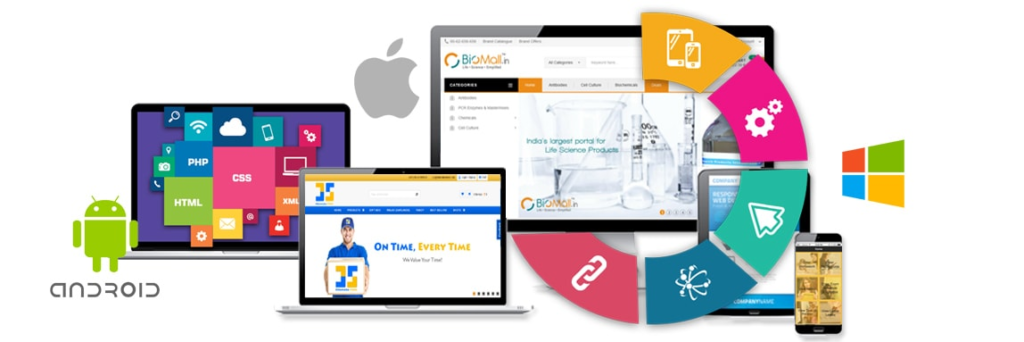In order to succeed in the market today, an eCommerce company needs to remain relevant. This industry is fiercely competitive and has very high standards for customer service. You, therefore, need strong tools to make sure that your efforts produce the finest outcomes and maintain your position as a major player in the market. Existing eCommerce platforms might seem like a perfect answer, but they cannot be customized to meet the specific demands of your company. With a custom eCommerce website development, you may have total control and flexibility over the platform’s features and functions while offering an exceptional customer experience.
About E-commerce Website Development

With so many digital products available on the market, selecting the ideal eCommerce platform for your online business may be challenging. To avoid becoming overwhelmed, we advise taking it slow and making a “shopping list” of your features. eCommerce is a rapidly changing and expanding industry where the stakes are quite high. When choosing between a pre-built platform and a bespoke eCommerce website development, it is imperative to take your company’s demands, goals, and ambitions into consideration. This step is essential since it will dictate how your company develops. If you choose poorly, starting out as an internet vendor could cost you far more than is necessary.
Key Features Of E-commerce Website Development
eCommerce companies should integrate important characteristics necessary for attracting visitors and turning them into consumers as the online market expands. A good conversion rate or a great user experience is not, however, guaranteed by all trends, including animations, 360-degree product previews, dynamic product search, and smart filtering. Every eCommerce site needs certain elements to ensure a meaningful online presence and boost your ability to compete with other businesses.
Let’s look at the ten requirements for offering amazing shopping experiences that an e-Commerce website development company provides.
1. SEO Options for Website Development

Search engine optimization has a significant impact on your sales and ROI, even if you don’t have a physical store and conduct all of your business online. Compared to other marketing initiatives, SEO offers the best return on investment. Despite this, the majority of online stores focus solely on paid advertisements and social media when they go public instead of taking search engines into account. They have no idea that SEO is completely free and supported by content marketing and that, over time it will only enhance domain authority, provide consistent website traffic, and boost site ranking. In order to draw in new clients, produce leads that your sales teams can pursue, and provide overall enduring benefits, your platform must be SEO-friendly.
2. E-commerce Website Mobile-Friendly

These stats demonstrate how important it is to have a mobile-friendly website if you want to draw in visitors. To create a seamless customer experience, your website’s design should instantly adjust to the mobile device’s screen size. Mobile device use is widespread; you don’t want to lose out on potential customers. Responsive design, dynamic serving, or dedicated mobile websites are your three options for making your website mobile-friendly.
Additionally, your website must be mobile-friendly because no eCommerce website development company can succeed without a connection to social media networks. People will interact with your brand on social media if they can visit your website from their phones.
3. Box Search Function on Website Development

A search box is necessary because today’s consumers are very impatient. We strongly advise making the search bar type-sensitive to help clients find what they’re looking for. Allow typos and choose the closest match rather than returning nothing.
There are numerous categories of customers. You should therefore permit searching by brand, category, promotions, etc. Additional filters can be added, including those for color, size, price, style, newest products, popular products, etc.
4. Navigation to Products for E-commerce Website

Your products are the most crucial components of your eCommerce website. It is crucial to place them in the appropriate product category in addition to constructing comprehensive product landing pages. Consider potential clients who are searching for a pair of pants. When they click on the pants category, they are either taken to the jackets category or discover other items that are unrelated to what they are looking for.
Your product navigation should be clear, simple to use and point consumers in the direction of the appropriate products. Navigation is used by 70% of users. Consequently, you should give your navigation menu a very high priority.
5. E-commerce Website Payment Procedures

The foundation of eCommerce platforms is the online payment system, so your website should support them. Payment gateways improve online transactions, consumer data protection, and fraud prevention. Payment choices play a big part in making judgments about purchases and finishing the sales process. Customers will turn to your competitors if they are unable to make online transactions using the desired payment option. Implementing alternative payment options in addition to debit and credit cards is highly advised. PayPal, bank transfers, and even cryptocurrency will be accepted as alternative payment methods. Choose online transactions with little to no transaction costs and more robust payment security.
6. Security is Essential in Website Development

Sadly, eCommerce websites are more vulnerable to hacking. Due to the volume of private and financial data processed, they are a target for cybercriminals. Data manipulation, data loss, and data theft are all possible outcomes of the attack. You should set security controls on your platform for website security and data protection.
7. Shopping Cart

The shopping cart, as simple as it may seem, is what sets an eCommerce website apart from other types of websites. Making it simple to add or delete products, return to the product pages to make changes, or buy additional items will satisfy your customers and ensure wonderful shopping experiences.
8. Promotions

Flash promotion options are more likely to boost your eCommerce sales because it has been demonstrated that customers are more likely to buy a product when it is on sale or if they receive a free gift with a purchase. Utilizing special offers and promotions will encourage customers to browse your website longer and make larger purchases. Different types of promotions are available, including discounts, gifts, package deals, free shipping, etc.
9. Product Specifics

A successful product page should be comprehensive, offer guarantees, and encourage visitors to become customers. A fantastic blog post by Neil Patel offers insightful advice on how to make killer product pages. Customers are assisted in making purchases via individual product pages that provide comprehensive product details, availability, stock, size, color, sizing charts, shipping prices, product images, and product videos. Customers should be able to find all the information they require on your product pages, from important elements to small ones.
10. High-Definition Images and Videos

Image sales outpace text sales. This is why you need to have real, excellent images and videos on your website. A professional photographer should be hired to take the photos and films. They must represent your brand and entice customers.
Also Read:
- E-Commerce Development With Comfygen
- How Altcoin Development is Driving Innovation in Cryptocurrency
Conclusion
As a company owner, you should keep in mind that marketing efforts in this market differ from others and demand greater involvement and attention from your team. Everything in eCommerce is about the purchasing experience, thus you should concentrate your efforts on giving your online customers unique experiences. As a result, your platform needs to be completely in line with your company’s goals and include features that marketers may use to provide an excellent user experience.